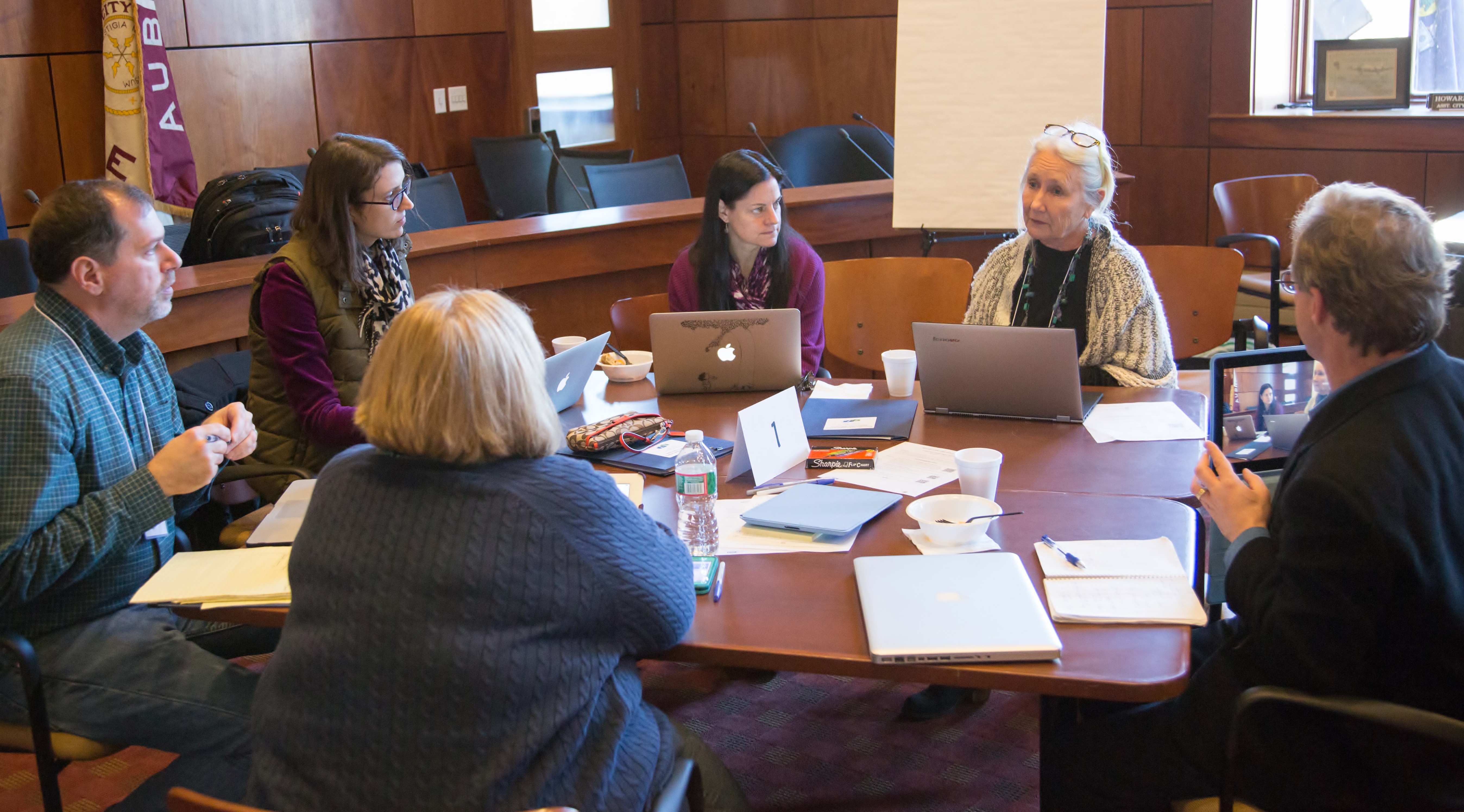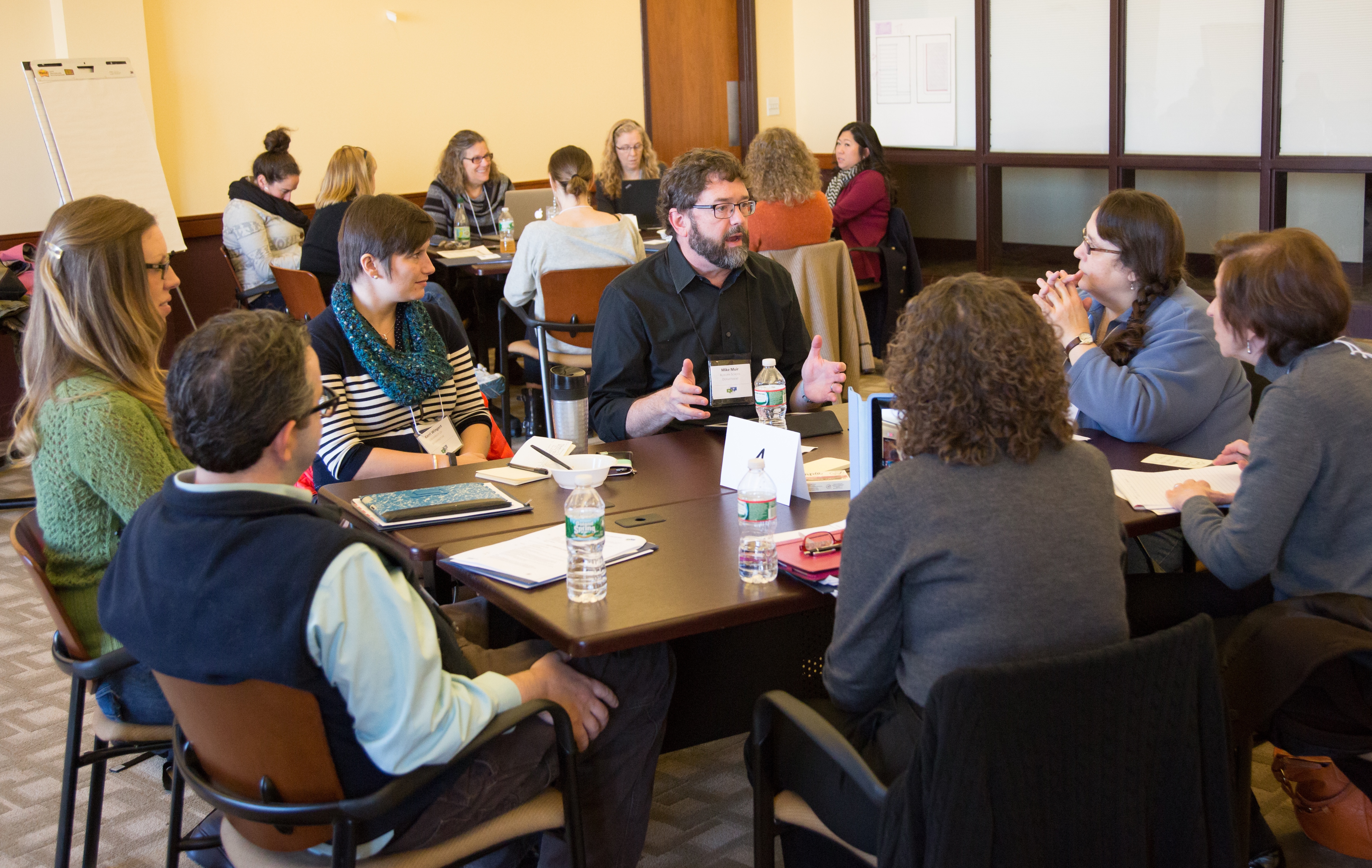Developing a Productive Struggle Mindset
Students experience productive struggle when they persist in trying to make sense of a difficult problem and develop new strategies for solving it. This perseverance is essential for developing mathematical reasoning. For struggle to be productive, students must have a classroom environment where they feel safe and supported in experimenting with different problem-solving strategies. Creating such an environment requires shifting the mathematical mindset of both students and teachers.
For Auburn, Maine, math coach Lisa Coburn, one of the biggest challenges for engaging in productive struggle is overcoming students’ existing mathematical mindset. Many students believe that being good at math means getting the right answer or being the first to finish a problem. Simply put, they believe that some students are natural mathematicians and others are not. The reality is that no one is born with a “math brain.” Like any skill, mathematical understanding must be developed and productive struggle is a necessary part of that process. Students must develop the mindset that anyone can learn to reason mathematically.
Jo Boaler, a mathematics education professor at Stanford University, explains how, with the right teaching and right messages, anyone can be good at math.
Not only must students believe that they can learn to do math and that struggling to develop greater mathematical understanding is worth it, they must also see the value in making mistakes—to view mistakes not as failure but learning opportunities. To help foster this mindset, Lisa used an example that linked the concept of productive struggle to something that spoke directly to students: video games. She asked students:
- What is it like when you play a video game for the first time?
- When playing a new game, do you win right away or does it take practice?
- When you fail, do you give up, put the game away, and never try again?
- When you fail, do you keep doing the same thing over and over again or do you change your strategy?
- Do you ask friends or siblings for help and learn from their strategies?
- Do you enjoy the process of trying out these different strategies?
- How does it feel when you finally win the game?
Teachers can use the video game analogy or liken the process to a different hobby the students are interested in. Lisa and her students also watched the video “Ormie,” about a determined pig with a sweet tooth who devises scheme after scheme to try to reach a jar filled with fresh cookies on top of a refrigerator. Although not directly linked to mathematics, the video portrays struggle as a method of testing different strategies. It’s not just about getting the right answer (or, for Ormie, the cookies); it’s also about understanding the task and testing different strategies for solving the problem until you find one that works. Even when it doesn’t work, you’ve still learned something from the experience and are in a better position to try again.
In discussing the broader concept of productive struggle with students, Lisa began connecting it to mathematics. She asked students questions like, “Do you think you’re good at math?” and “How do you know if someone is good at math?” During this discussion, Lisa was able to draw from the video game analogy and “Ormie” video to help students think about developing mathematical understanding as a process. She offers some suggestions to help teachers develop classroom norms that encourage, support, and model the productive struggle process:
- Ensure that students have the time and necessary tools (whether screencasting apps, physical manipulatives, or paper and pencil) to engage in productive struggle.
- Ask questions that promote student thinking.
- Encourage students to ask questions (of the teacher and of fellow classmates).
- Continually remind students that mistakes are “expected, inspected, and respected.”
- Incorporate number talks into lessons so that students see that there is more than one way to solve a problem.
- Use rich, open tasks that allow for different problem-solving strategies.
- After posing a problem, set parameters but otherwise be hands-off.
- Give students an opportunity to discuss their strategies in pairs, small groups, or with the class.
- Showcase kids who are self-correcting to demonstrate to other students what productive struggle looks like.
This MIND Research Institute video describes teaching habits that support productive struggle in math classrooms.
Engaging in productive struggle requires teachers to shift their mathematical mindset as well. Lisa explained that knowing when to be hands-off and when to intervene is a delicate balance. There is an instinct to want to rescue young learners that teachers must resist. “We don’t like to teach in struggle,” she said. “Having a clear understanding that productive struggle is where kids learn might be new for some [teachers].” She says understanding the learning progression helps teachers know how and when to intervene. Likewise, discussing productive struggle with colleagues can help teachers feel supported as they attempt to shift their mindset. So, while teachers are continually reminding students of the benefits of productive struggle and encouraging them to persevere, it helps to also remind themselves that just because a student is struggling doesn’t mean they aren’t learning.
Tag(s): productive struggle







